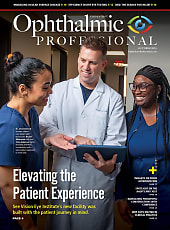On February 2, Punxsutawney Phil, the famous groundhog that lives in central Pennsylvania, woke up from his burrow and saw his shadow, indicating that there would be 6 more weeks of frigid, winter weather. The first Groundhog Day was observed in 1886, and this annual tradition has become an internationally recognized event that may forecast the length of winter for the remaining weeks. How accurate is Punxsutawney Phil? According to CNN, he has only been correct about 35% of the time since the year 2005!
Fortunately, the official start of spring was March 20, so the chilly winter season should be behind us (and the groundhog). This day coincides with the spring equinox (vernal equinox) in which the sun crosses above the Earth’s equator, moving from the south to north direction. The word “equinox” is derived from the Latin words aequis, meaning “equal,” and nox, meaning “night.” On this day, the Northern Hemisphere and the Southern Hemisphere receive approximately equal amounts of daylight and darkness because both are at equal distances from the sun.
For individuals who live in the Northern Hemisphere, the spring season marks the beginning of longer days with warmer weather patterns. Spring represents a new cycle of growth and rejuvenation. In the wonderful specialty of retina, we are constantly growing, evolving, and innovating. Together, we are challenging the status quo. Many of us are involved in drug development or participating in clinical trials to develop more effective and safe treatment options for our patients. It is truly amazing to be in the field of retina.
This issue of Retinal Physician includes many new educational offerings. Drs. Omar Saeed and Veeral Sheth provide an overview of novel tyrosine kinase inhibitors that are being investigated in clinical trials for the management of exudative age-related macular degeneration (AMD) and diabetic retinopathy. In addition, Drs. Justin Muste and Katherine Talcott share updates on cutting-edge medicines that are designed for both efficacy and extended durability of action in wet AMD. These articles provide a concise and succinct summary for the busy retina physician.
Thank you for taking the time to read Retinal Physician—we appreciate your partnership. RP









